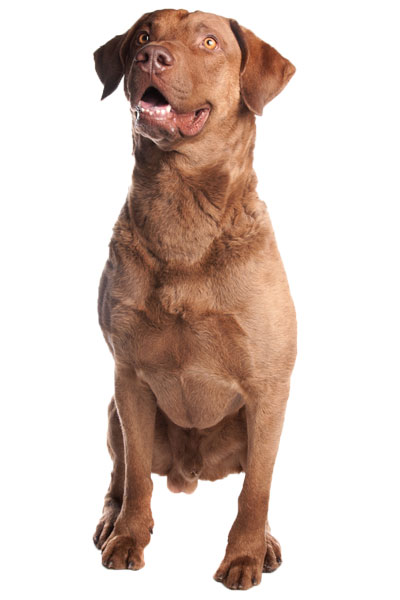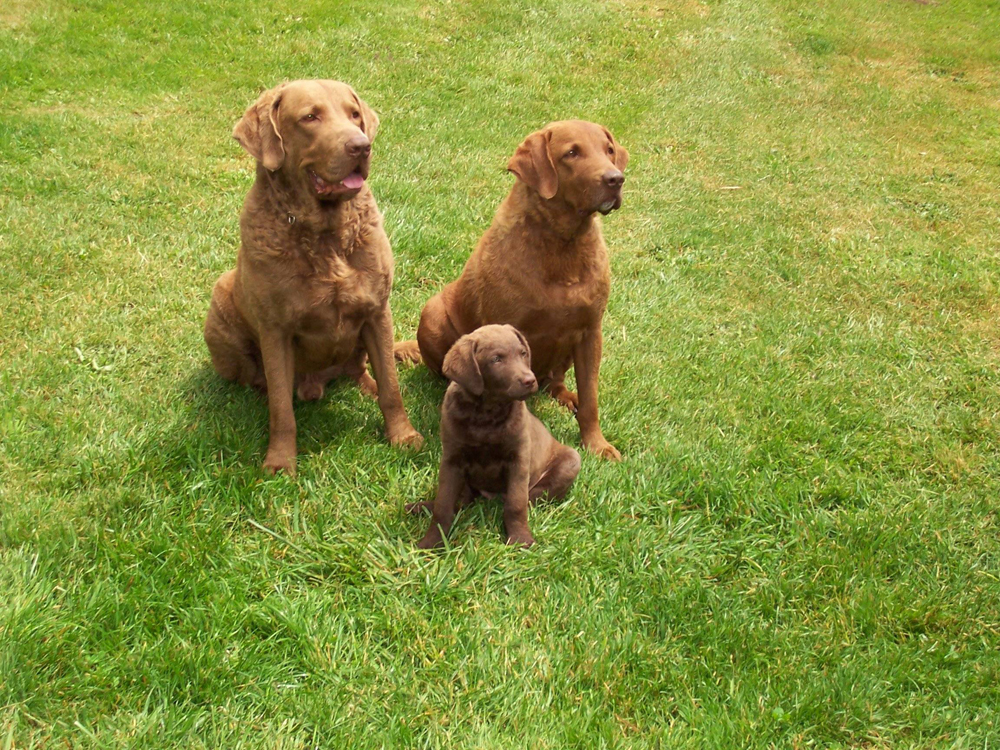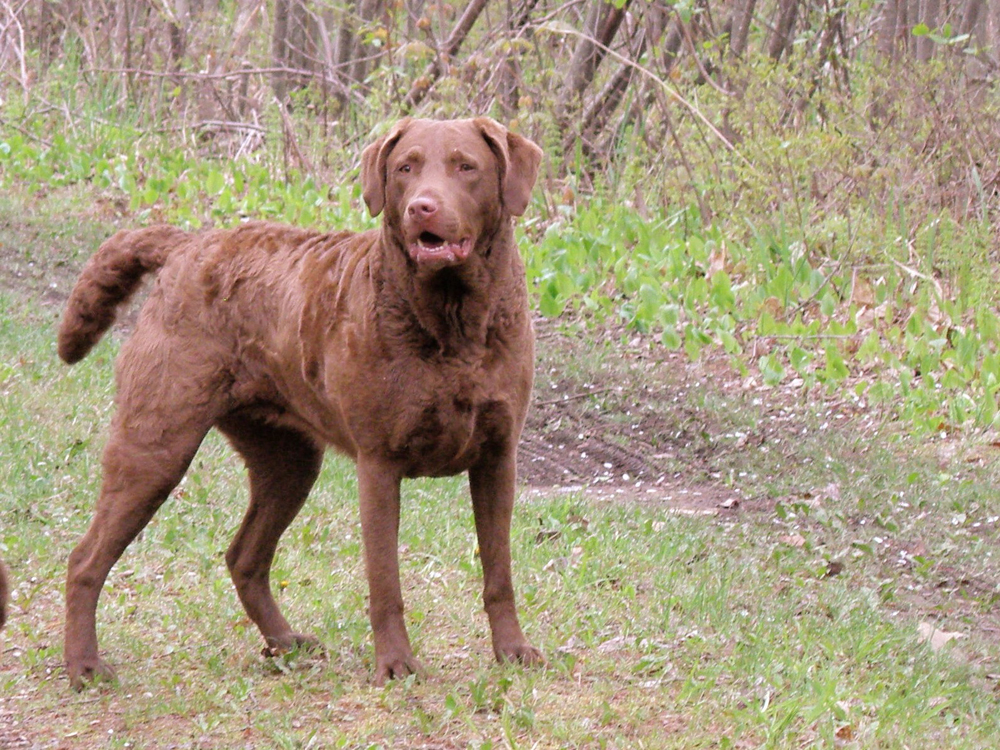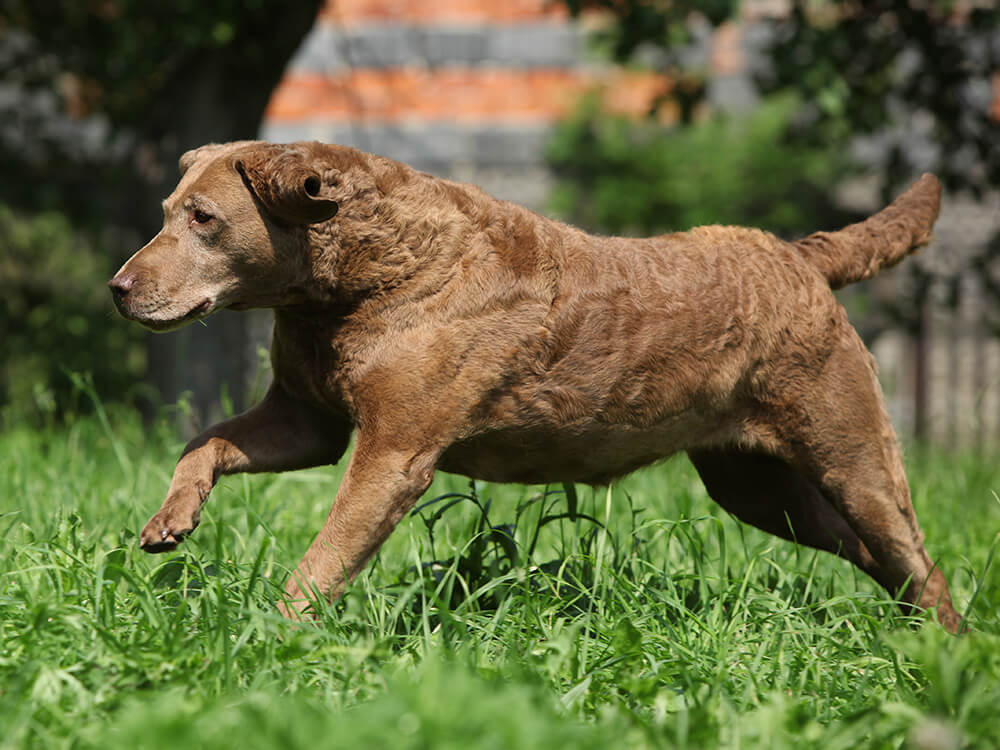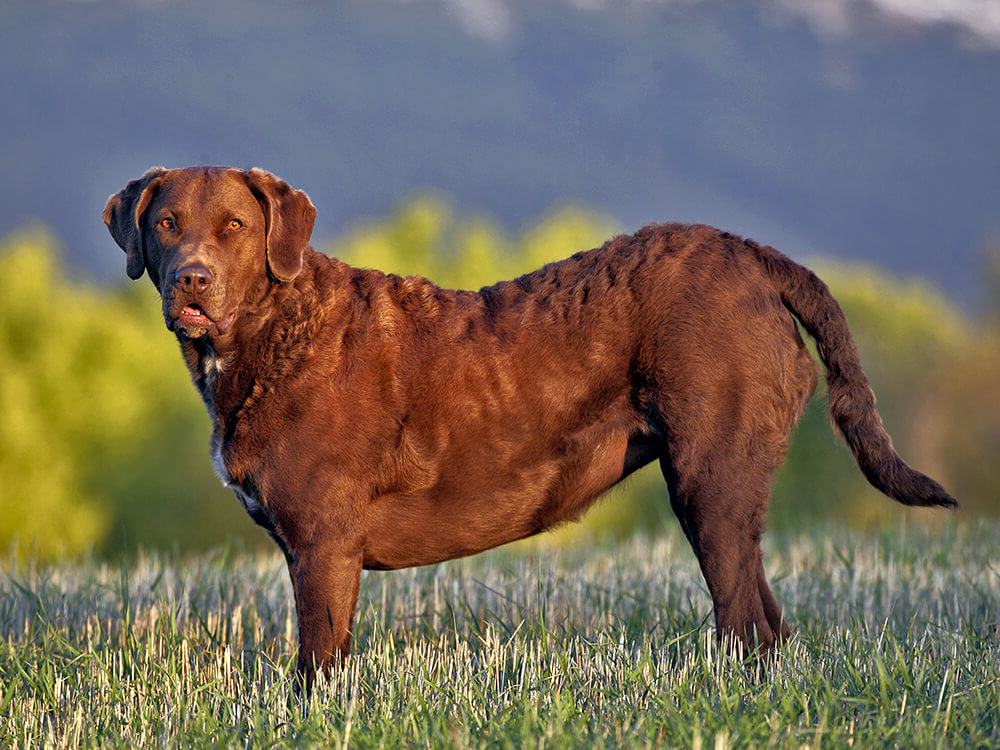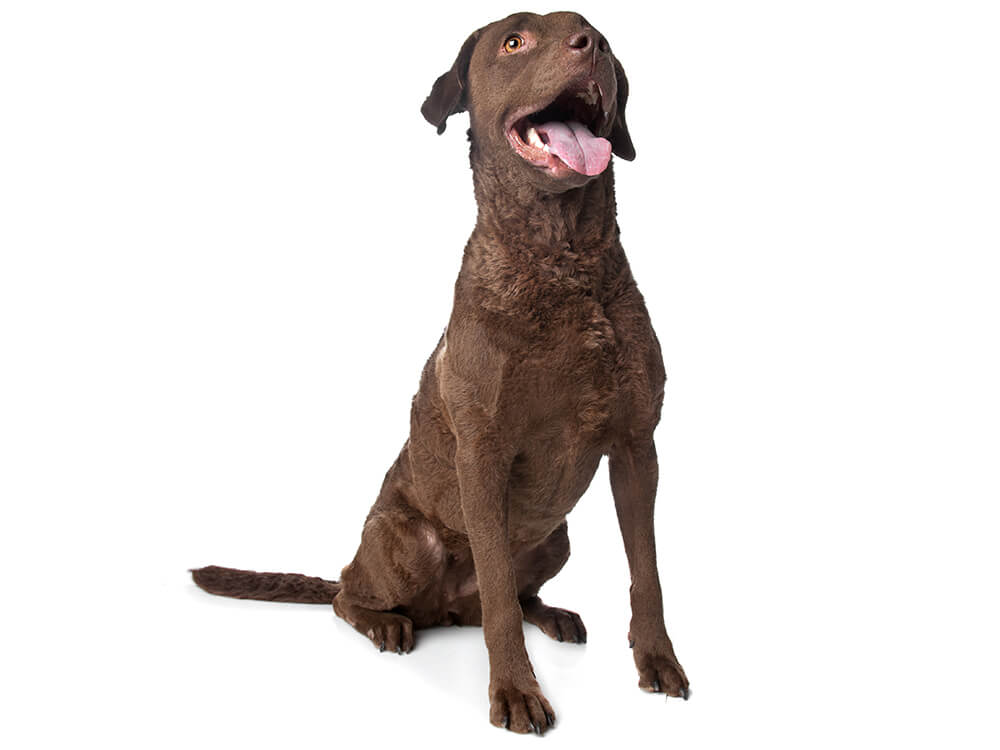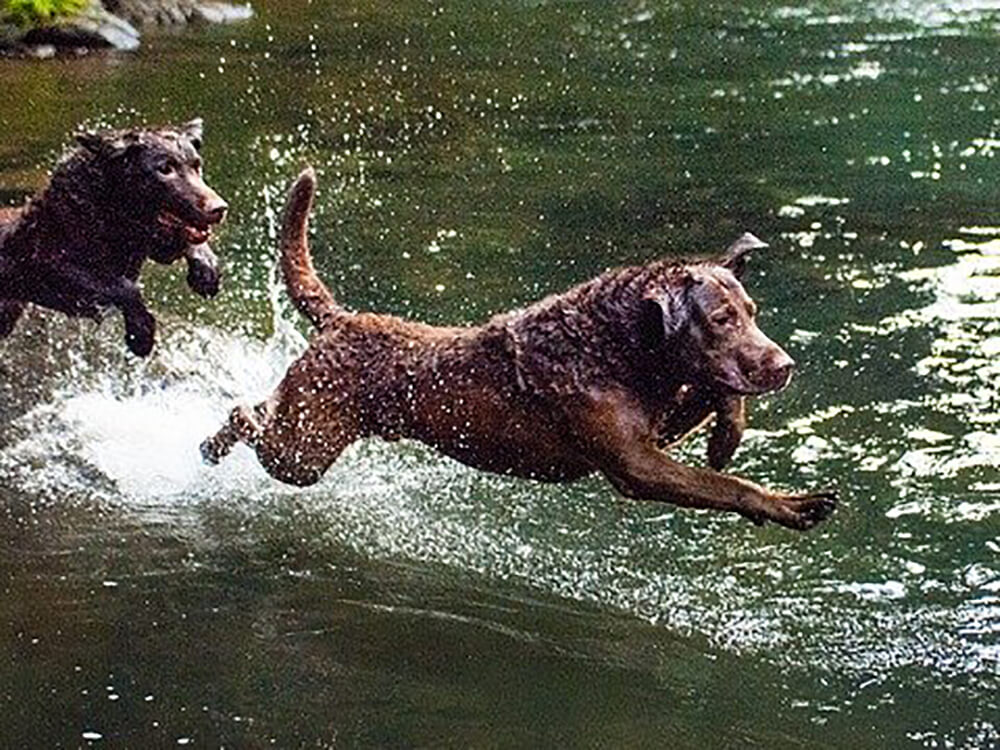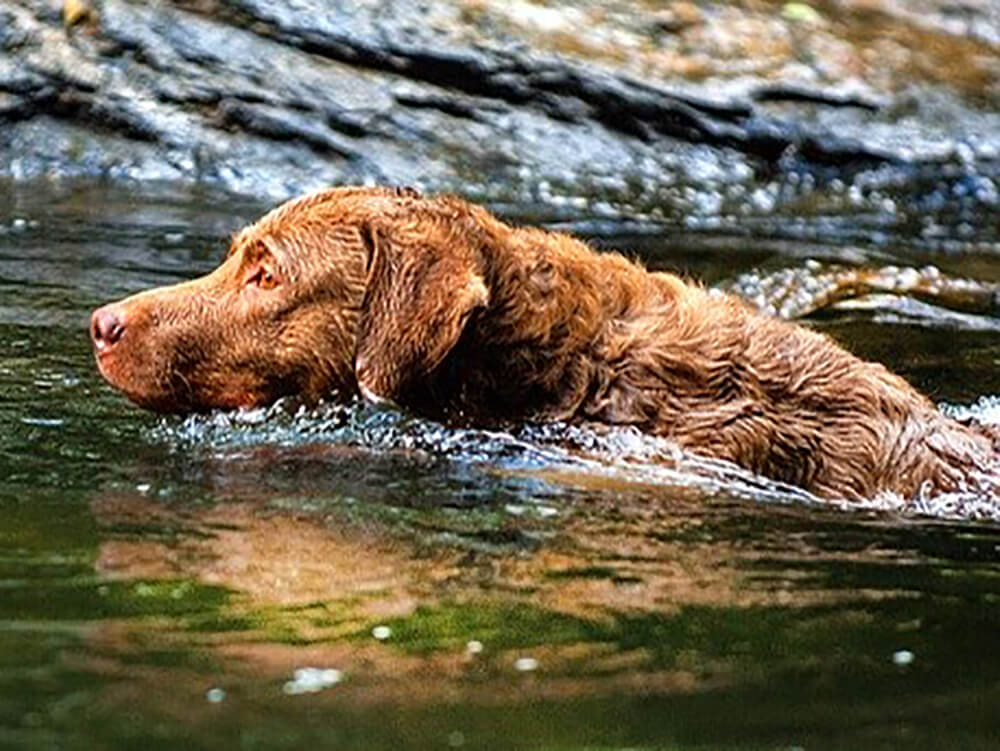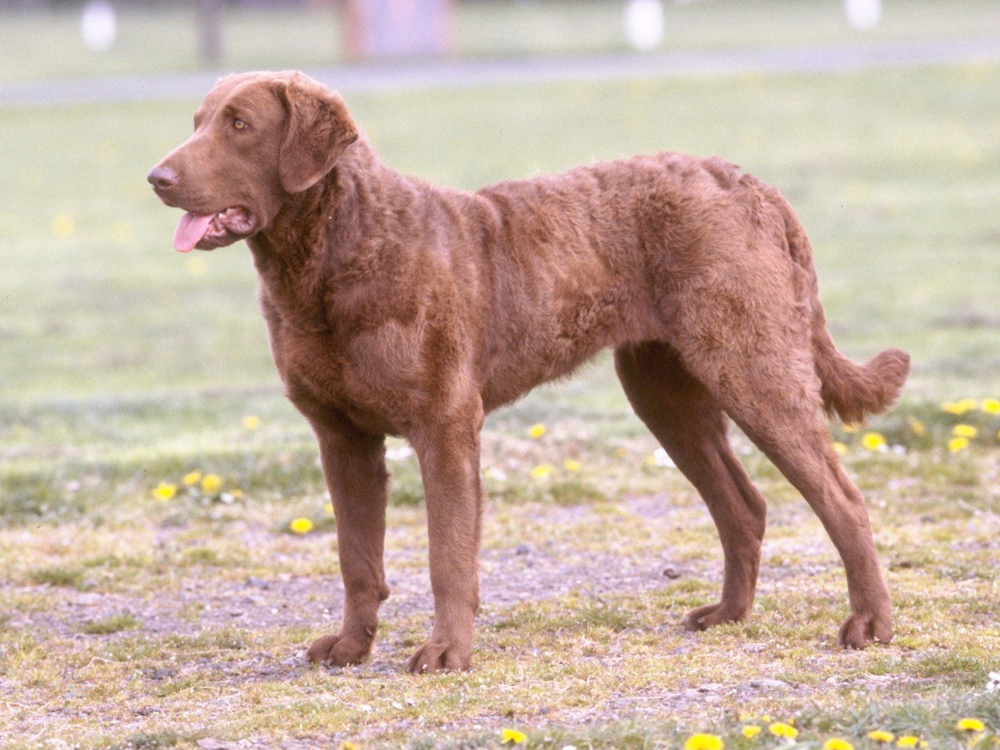
Chesapeake Bay Retriever Breed Pictures
Vital Breed Stats
| Height: | 58 - 66 cm M | 53 - 61 cm F |
| Weight: | 29 - 36 kg M | 25 - 32 kg F |
| Breed Group: | Gundog Dog Group |
| Life Expectancy: | 13 - 15 years |
| KC Registered: | No |
Breed Characteristics
| Size: |  |
| Grooming: |  |
| Exercise Level: |  |
| Trainability: |  |
| Barking Level: |  |
| Good with Children: |  |
| Good with other pets: |  |
| Affectionate: |  |
| Protective: |  |
| Cost to Keep: |  |
Give a thumbs up if you love the Chesapeake Bay Retriever

0
More About the Breed
History
In 1807, two puppies similar to Newfoundland dogs were rescued from a shipwreck in the Chesapeake Bay of Maryland. These water-loving puppies, which grew to be great duck hunters, were bred with local retrieving dogs. The resulting puppies are believed to be the ancestors of the Chesapeake Bay Retriever. Other breeds used to develop the breed were the Curly-Coated and the Flat-Coated Retrievers, Coonhounds, and Irish Water Spaniels. The Chesapeake Bay Retriever’s strength, stamina, sturdy build and dense coat allowed it to successfully work in rough, icy waters.
Breed standards were established in 1885 and the Chessie only arrived in the UK in 1933. It is recognised by major registries, including The Kennel Club here in the UK under the Gundog group. Since the 70's, the breed has been a popular gundog as well as a companion and family pet.
Appearance
The Chesapeake Bay Retriever has a classic retriever look, sporting a muscular body with a short slightly wavy hair and hanging ears. A major difference is its broad head with a medium stop, thin lips that do not hang, well-developed nostrils, and webbed feet used for swimming. Chessies have medium eyes that are set wide apart, a strong jaw with a perfect scissor bite, and a moderately long neck. The colour of their nose and lips depend on their coat. Males are easily distinguishable from females. The average height is 56 to 66 centimetres and weight is 65 to 80 pounds.
Chessies are large dogs that boast of a unique coat comprising of a harsh, oily outer coat, and covering its entire body is a fine, dense, woolly and weather-resistant undercoat. This combination provides the right insulation that enables the breed to hunt in all conditions even in ice and snow. The hair in its neck, shoulders, back, and loins is wavy. A little feathering on its tails is permitted.
Accepted colours according to KC standards are ash, brown, light brown, dark brown, dead grass, and sedge. These colours allow Chessies to camouflage in its surroundings, which is specifically helpful in hunting.
Grooming
Although this breed sheds heavily in the spring and autumn, grooming is relatively easy because it does not need to be taken to a professional groomer for trimming or clipping. Regular brushing will take care of the dead hair and distribute natural oils. A warm bath will also be beneficial during shedding season.
Apart from caring for its coat, also pay attention to its teeth, ears, and nails. Some owners tend to ignore other aspects of grooming and only focus on the coat. Also check your Chessie’s skin for abnormal spots and fleas/ticks.
Temperament
Intelligence
Nutrition
- Senior and less active: up to 1,500 calories daily
- Typical adults: up to 1,680 calories daily
- Physically active/working dogs: up to 1,870 calories daily
Feeding
Health
Exercise
Cost of Ownership
Some people are not aware that raising a dog is financially challenging. Aside from buying a well-bred puppy, the expenses just continue to add up as you try to provide it with a good life. Obtaining a well-bred Chesapeake Bay Retriever puppy isn’t as easy as popular breeds since it is rare in the UK. You have to be on a waiting list and would need to set aside at least £500 or £800 and more.
To make your dog comfortable in your home, you need to buy basic equipment and supplies, which will set you back around £200. Food and treats will be £60 a month. Routine veterinary check-up costs to keep your dog healthy will cost as much as £1,000 annually. This does not even include additional expenses if it gets ill and would need surgeries or long-term treatments. This is the reason why you need to get pet insurance. Monthly costs start at £20 for basic and £50 for lifetime, depending on the premium you choose.
Is a Chesapeake Bay Retriever Right for You?
- The Chesapeake Bay Retriever is a loyal, hardworking and courageous breed.
- As a working breed, it thrives in the countryside and loves to do outdoor activities with its owners.
- It is not for first-time owners and families with very young children.
- The breed sheds a lot at certain times but does not require any special grooming procedures.
- It is not for families with sedentary lifestyles who live in city apartments.
